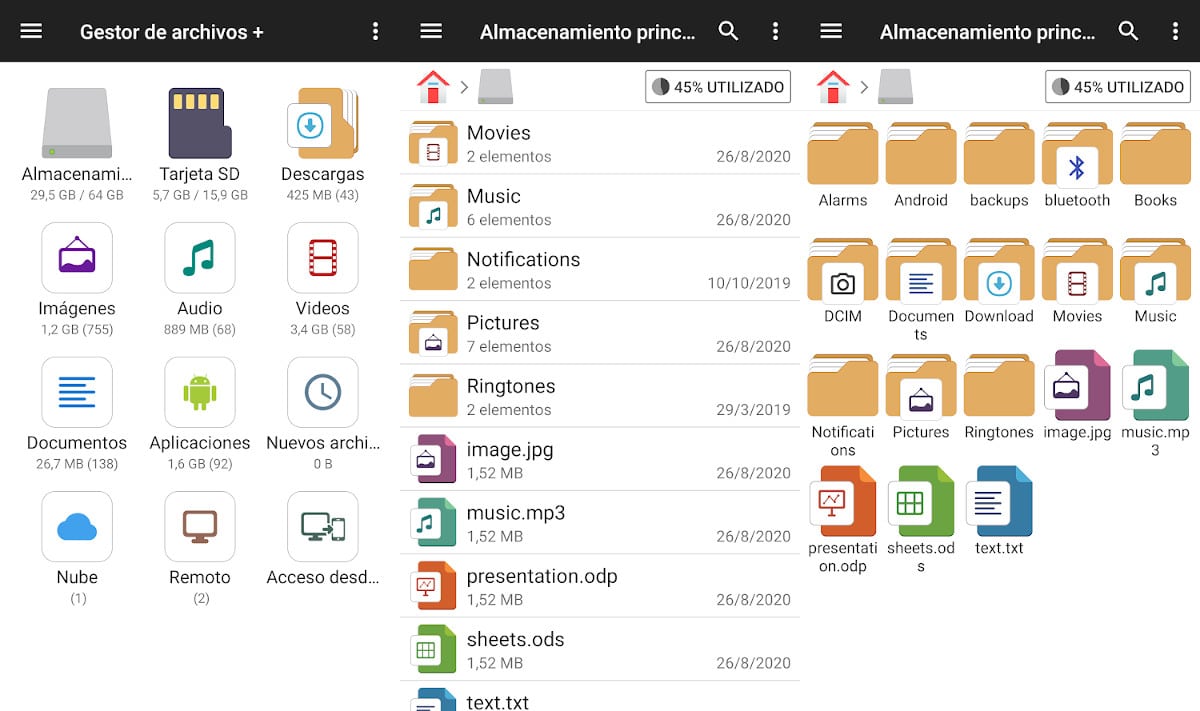
In the first versions of Android, viewing the system files was quite a process, today we are not so far from the same, but it is good to know how to view android system files with (in some cases) the device's built-in file manager or an app that can be downloaded from the Play Store.
Since Android 5.0 there are a good number of applications that offer to be the ultimate file or document viewer. Among them we can highlight Files from Google or "File Manager" from Files Manager Plus. With both applications we can navigate between the internal storage folders and also see Android OS files.
In this article we will use these applications to see among the hidden addresses that our device has.
How to View Android System Files with File Manager Plus File Manager

The process is quite simple, you just have to download the application and grant access permissions to the internal memory of the device. This is a sensitive permission, which cannot be granted to any app for the sake of information. However, this file manager is considered a safe app.
Having understood this point, you just have to do the following to download this application and view the system files:
- Unlock the device.
- Go to the Play Store app.
- Look for the "File Manager" app, make sure you're looking under apps (not books or movies).
- Download and install the app, luckily it's not as heavy as other file managers.
- Open the app and accept the permissions so that it can view, edit or delete the files it finds in the device storage.
- You can now switch between internal storage or an SD card.
How to view hidden files on Android
After opening the previously installed file manager application, go to the internal storage and look in the options (upper right corner) for the option “Show hidden files”. In this way we will see a list in each folder, of the files that do not appear by default.
How to view Android 10 system files
The new versions of Android (and depending on the manufacturer) have an app called “Files” among the system applications. With it we can view between the files or folders located on the internal or external storage of the device, and usually already has the permissions to manage files.
Once inside the application, you only have to choose the type of file to filter. We can also freely explore the folders, and at the top right in the application settings we can also enable the “show hidden files (and folders)” function.
How to find hidden files in Android 10 step by step
If you have never used an Android file manager app, you can follow this step-by-step guide, no matter if the Files app is different on your system, because they are all very similar to each other. Do the following:
- Unlock the device.
- Find and tap the Files app that comes installed by default.
- Tap the three vertical dots icon in the top right corner.
- Choose the “Show hidden files” option.
- Tap the menu icon in the top left corner.
- Tap on the internal storage icon, it is usually called “Internal Storage” or has your phone model written on it.
- You will see a list of folders and files at the root of the storage memory, and because hidden files have been enabled, folders that start with a “.” (they are hidden by default).
How to find and delete Android files
To find or delete a specific file, we can use the Files app that comes installed by default on most modern devices, or directly try the app that we downloaded at the beginning of this article.
In case of using a file manager that comes installed by default on the system, it is likely that the Android version must be equal to or greater than Android 10 to ensure that the following steps work. In case you have everything ready, you just have to do the following:
- Unlock the device.
- Open the Files app, in some cases it is also called “File Manager”.
- You will see a list with all the files filtered by image, video, document, etc. Tap the magnifying glass at the top of the app.
- Type the name of the file or folder you are looking for. In case it doesn't have a specific name, you can filter by file type.
- Once it appears in the list, you can open it by touching it.
- In case you want to delete the file, you just have to hold it down and touch the trash can icon that is displayed.